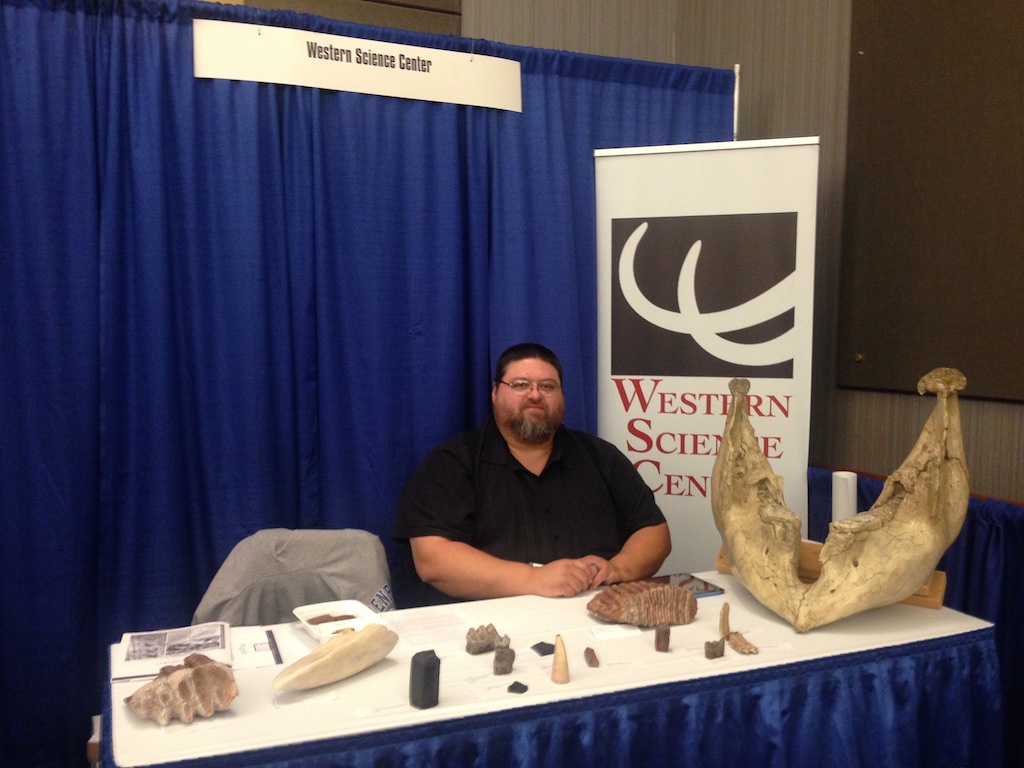 I'm currently on a trip back east, primarily to give presentations at two different professional conferences. After meeting up with my wife, Brett, we drove to Chicago to attend the National Science Teachers' Association meeting. While there we conducted a workshop on producing virtual field trip e-books for iPads, and gave a presentation on WSC's paleontology teaching kits; Brett gave additional presentations on using mammal skulls to teach about trophic levels and on webquests. We then left Chicago and headed south to Chattanooga for the Geological Society of America Southeastern Section meeting (SEGSA).In addition to our presentations at SEGSA, Brett and I are running an exhibitor's booth (above) to give the participants information about the Western Science Center and to sell teaching kits and cast replicas of specimens to raise funds for the museum.Running our booth cuts into my time for attending presentations, but I did make it to several talks and quite a few posters (generally my favorite part of the meeting). The morning posters included a session on Geoscience Education, including one by Andy Heckert of Appalachian State on a student exercise to describe their hometown geology. In the same session Zoe Zeszut and coauthors presented on Ohio University's Digital Atlas of Ordovician Life, an online guide to the Ordovician fossils of Ohio and the surrounding regions, such as these highly fossiliferous beds just across the state line in Kentucky:
I'm currently on a trip back east, primarily to give presentations at two different professional conferences. After meeting up with my wife, Brett, we drove to Chicago to attend the National Science Teachers' Association meeting. While there we conducted a workshop on producing virtual field trip e-books for iPads, and gave a presentation on WSC's paleontology teaching kits; Brett gave additional presentations on using mammal skulls to teach about trophic levels and on webquests. We then left Chicago and headed south to Chattanooga for the Geological Society of America Southeastern Section meeting (SEGSA).In addition to our presentations at SEGSA, Brett and I are running an exhibitor's booth (above) to give the participants information about the Western Science Center and to sell teaching kits and cast replicas of specimens to raise funds for the museum.Running our booth cuts into my time for attending presentations, but I did make it to several talks and quite a few posters (generally my favorite part of the meeting). The morning posters included a session on Geoscience Education, including one by Andy Heckert of Appalachian State on a student exercise to describe their hometown geology. In the same session Zoe Zeszut and coauthors presented on Ohio University's Digital Atlas of Ordovician Life, an online guide to the Ordovician fossils of Ohio and the surrounding regions, such as these highly fossiliferous beds just across the state line in Kentucky: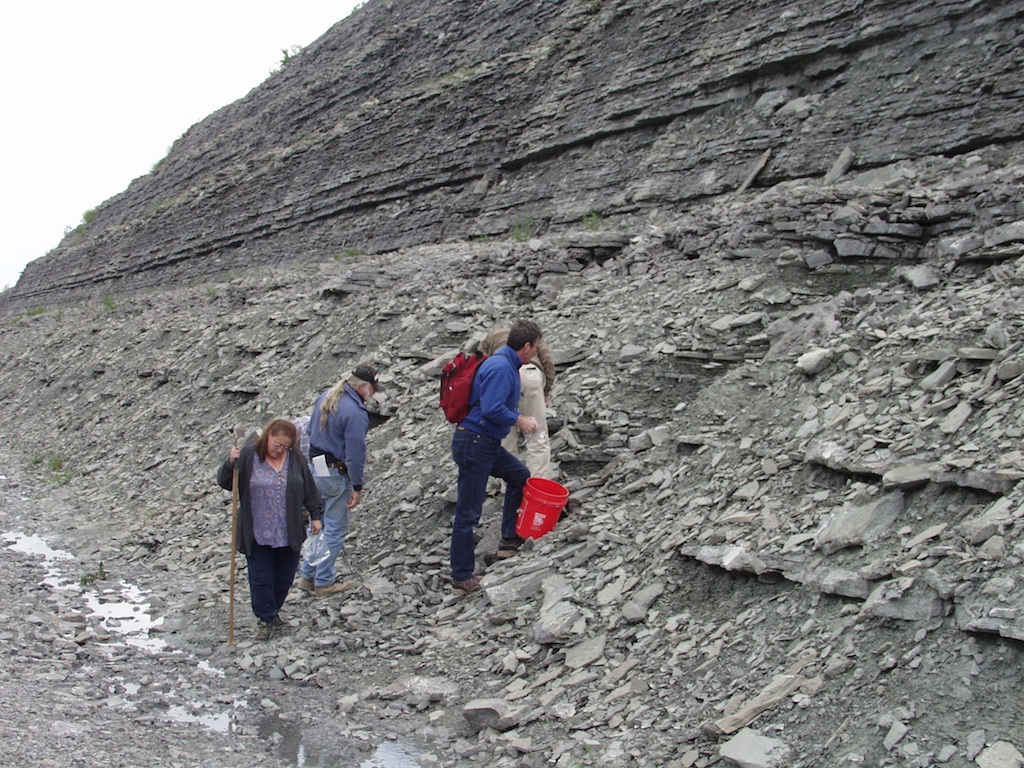 The afternoon session included most of the paleontology posters, including the first of my three presentations. Shortly before I left the Virginia Museum of Natural History (VMNH) I received a grant from the National Geographic Society to run a salvage operation at the Solite Quarry, a Triassic Period deposit on the Virginia/North Carolina state line that includes spectacular fossils of reptiles, fish, plants, and insects. My poster included five coauthors from VMNH, Appalachian State, and the National Museum of Scotland and was basically a progress report on the state of the salvage operation. I got the salvage operation started as one of my last activities at VMNH (below), and they continued the operation after my departure to WSC. The salvage work has resulted in the collection of a large number of new fossils, some of which were only known previously by a handful of specimens.
The afternoon session included most of the paleontology posters, including the first of my three presentations. Shortly before I left the Virginia Museum of Natural History (VMNH) I received a grant from the National Geographic Society to run a salvage operation at the Solite Quarry, a Triassic Period deposit on the Virginia/North Carolina state line that includes spectacular fossils of reptiles, fish, plants, and insects. My poster included five coauthors from VMNH, Appalachian State, and the National Museum of Scotland and was basically a progress report on the state of the salvage operation. I got the salvage operation started as one of my last activities at VMNH (below), and they continued the operation after my departure to WSC. The salvage work has resulted in the collection of a large number of new fossils, some of which were only known previously by a handful of specimens.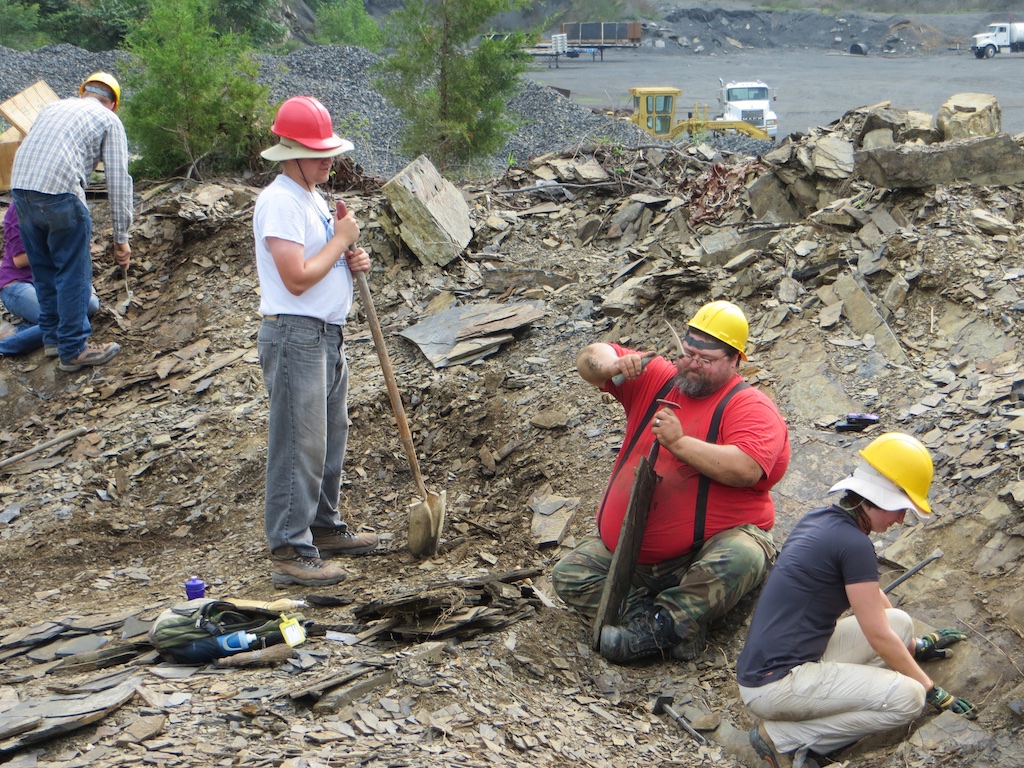 Just to prove that I do, in fact, do field work!In some of the other paleontology section posters, Jennifer Bradham, Larisa DeSantis, and Malu Jorge used stable isotope data nd dental microwear to compare the diets of Florida specimens of the Pliocene peccaries Mylohyus (below, at top, from the Texas Memorial Museum) and Platygonus (below, at bottom, from the American Museum of Natural History):
Just to prove that I do, in fact, do field work!In some of the other paleontology section posters, Jennifer Bradham, Larisa DeSantis, and Malu Jorge used stable isotope data nd dental microwear to compare the diets of Florida specimens of the Pliocene peccaries Mylohyus (below, at top, from the Texas Memorial Museum) and Platygonus (below, at bottom, from the American Museum of Natural History):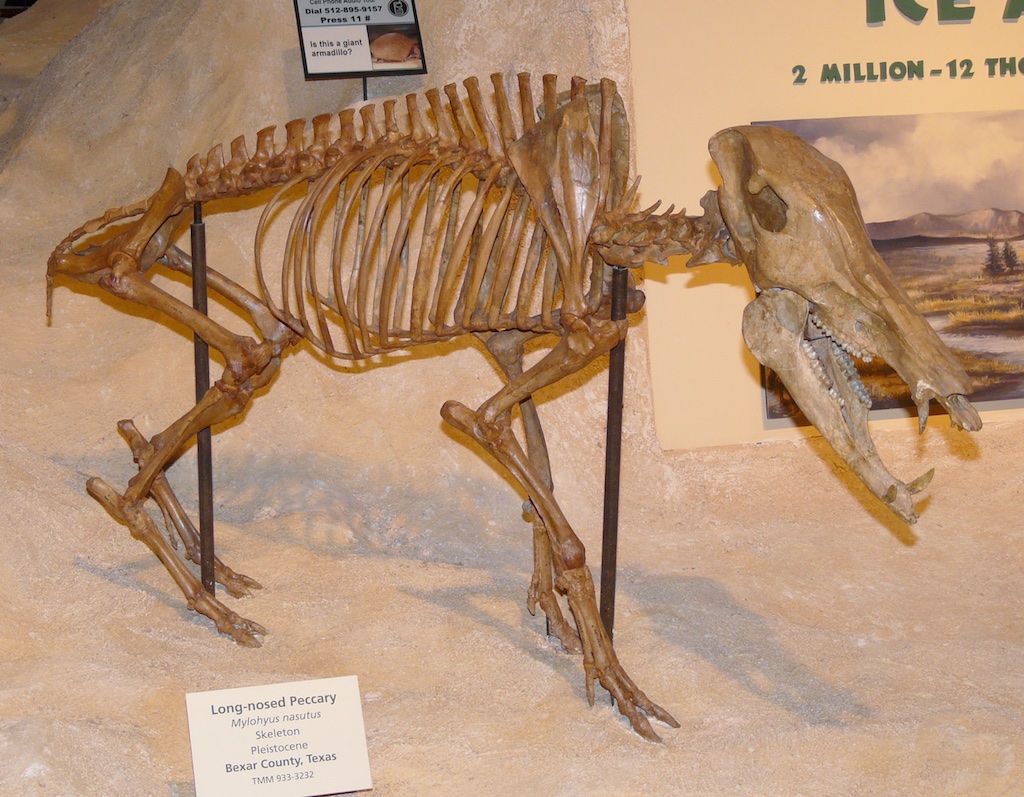
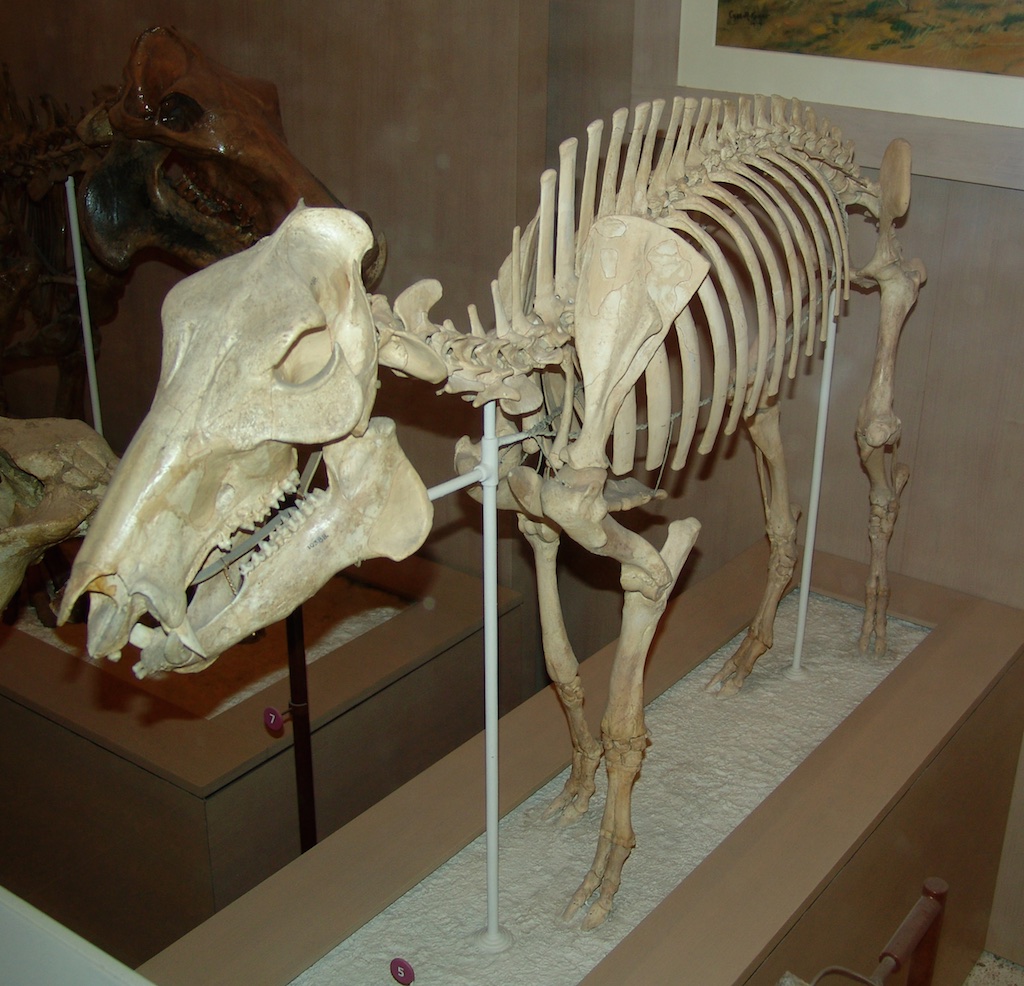 Three different posters examine various aspects of drill holes on mollusk shells, formed when predators drill a hole through the shell to get at the animal inside (as in the shell shown below):
Three different posters examine various aspects of drill holes on mollusk shells, formed when predators drill a hole through the shell to get at the animal inside (as in the shell shown below):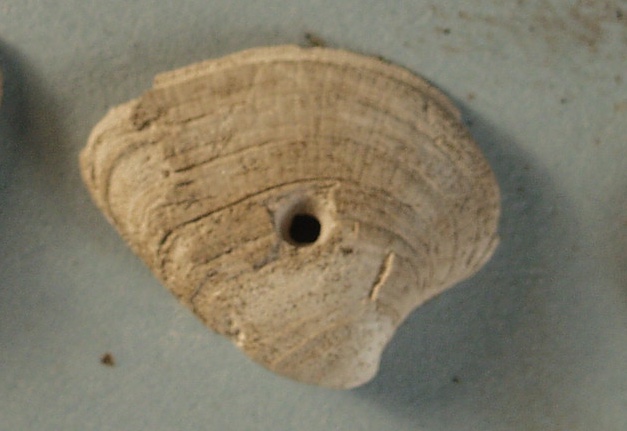 Kathryn Estes-Smargiassi and three coauthors looked at these drill holes specifically on scaphopods, or tusk shells. Patricia Kelley and six coauthors examined the paleoecological patterns of drill predation on Pleistocene mollusks from Florida. And, while these drill holes are usually formed by predatory snails, Deborah Freile and three coauthors looked at examples of shells that had been drilled by octopi.Late in the afternoon I left the posters to catch the last three talks in the paleoichnology (trace fossil) session. Kelli Straka and five coauthors reported on coprolites (fossil poo) containing teeth, fish scales, and bone fragments from Triassic deposits in Arizona, while David Schwimmer presented on Cretaceous coprolites from the southeast, including examples from fish, sharks, and crocodilians, including a shark coprolite that contained almost the entire neck of a baby turtle. In the last talk in the session Tony Martin and three coauthors reported on modern alligator burrows from Georgia barrier islands, large structures that can be up to several meters long.These meeting are also a nice opportunity to keep in contact with old colleagues. I was pleasantly surprised when the WSC booth was visited by Heyo van Iten from Hanover College (below). Heyo was my undergraduate paleontology professor at Carleton College more than 25 years ago.
Kathryn Estes-Smargiassi and three coauthors looked at these drill holes specifically on scaphopods, or tusk shells. Patricia Kelley and six coauthors examined the paleoecological patterns of drill predation on Pleistocene mollusks from Florida. And, while these drill holes are usually formed by predatory snails, Deborah Freile and three coauthors looked at examples of shells that had been drilled by octopi.Late in the afternoon I left the posters to catch the last three talks in the paleoichnology (trace fossil) session. Kelli Straka and five coauthors reported on coprolites (fossil poo) containing teeth, fish scales, and bone fragments from Triassic deposits in Arizona, while David Schwimmer presented on Cretaceous coprolites from the southeast, including examples from fish, sharks, and crocodilians, including a shark coprolite that contained almost the entire neck of a baby turtle. In the last talk in the session Tony Martin and three coauthors reported on modern alligator burrows from Georgia barrier islands, large structures that can be up to several meters long.These meeting are also a nice opportunity to keep in contact with old colleagues. I was pleasantly surprised when the WSC booth was visited by Heyo van Iten from Hanover College (below). Heyo was my undergraduate paleontology professor at Carleton College more than 25 years ago.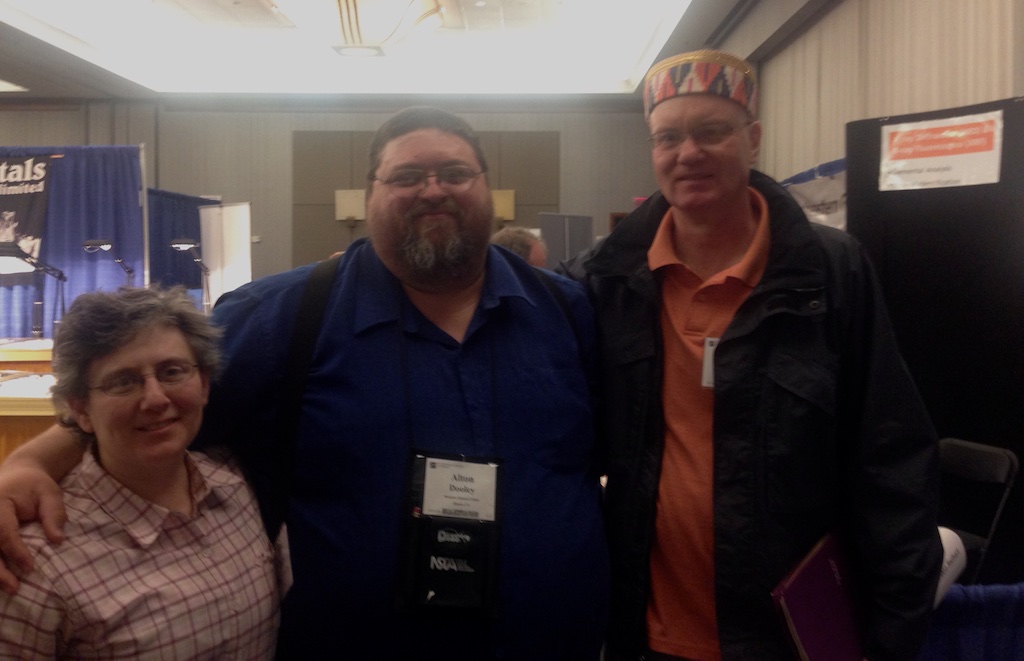 The meeting continues tomorrow with another full slate of posters and talks.
The meeting continues tomorrow with another full slate of posters and talks.
